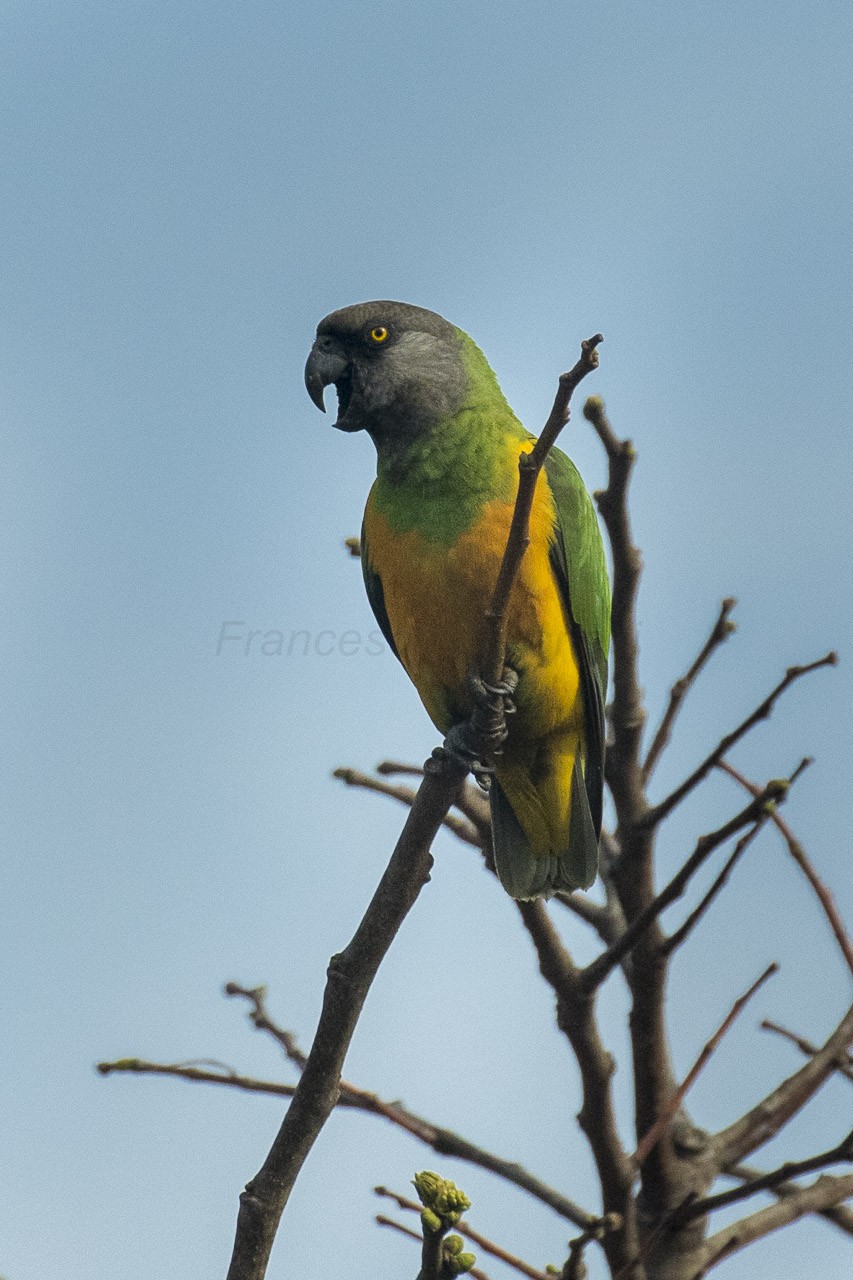Senegal Parrot
A species of African Green Parrots Scientific name : Poicephalus senegalus Genus : African Green Parrots
Senegal Parrot, A species of African Green Parrots
Botanical name: Poicephalus senegalus
Genus: African Green Parrots
Content
Description General Info
 Photo By Francesco Veronesi , used under CC-BY-SA-2.0 /Cropped and compressed from original
Photo By Francesco Veronesi , used under CC-BY-SA-2.0 /Cropped and compressed from original Description
Senegal parrots are about 23 centimetres (9.1 inches) long, weigh about 120 to 170 grams (4.2 to 6.0 ounces). They have a relatively large head and beak for their overall size, and feathers form a short broad tail. Adults have a charcoal grey head, grey beak, bright yellow irises, green back and throat, and yellow underparts and rump. The yellow and green areas on a Senegal parrot's front form a V-shape resembling a yellow vest worn over green. Young Juveniles have dark grey, almost black, irises, which change to light grey. Senegal parrots are not sexually dimorphic, but there are some hypotheses which sometimes might help to determine the gender of adult birds: The V-shape of the vest is usually longer in females; in females the green area extends down over the chest to between the legs, whereas in males the tip of the green area ends midway down the chest. The female's beak and head are generally slightly smaller and narrower than the male's. The under-tail covert feathers (short feathers under the base of the main tail feathers) are generally mostly yellow in the male and generally mostly green in the female. Males are generally, but not always, larger and heavier than female birds. 
Size
23 cm
Nest Placement
Cavity
Feeding Habits
Senegal Parrot consumes a variety of fruits, seeds, buds, flowers, and cultivated crops including millet, maize, and peanuts. Their foraging behavior involves seeking out these foods, with a preference for certain native species. Senegal Parrot has specialized dietary preferences unique among birds.
Habitat
Senegal Parrot are typically found in a variety of lowland habitats including open woodland, savannas, and light brush. Preferring open areas with sparse tree distribution, such as those with Adansonia, Parkia filicoides, or Borassus palms, they thrive in regions that offer a mix of trees and open spaces. These habitats are often characterized by clearance for agricultural purposes, offering scattered trees and occasional dense woodland canopies. Senegal Parrot adapt well to human-altered landscapes and can also be found inhabiting villages within their geographic range.
Dite type
Omnivorous
General Info
Feeding Habits
Bird food type
Scientific Classification
Phylum
Chordates Class
Birds Order
Parrots Family
Parrots Genus
African Green Parrots Species
Senegal Parrot